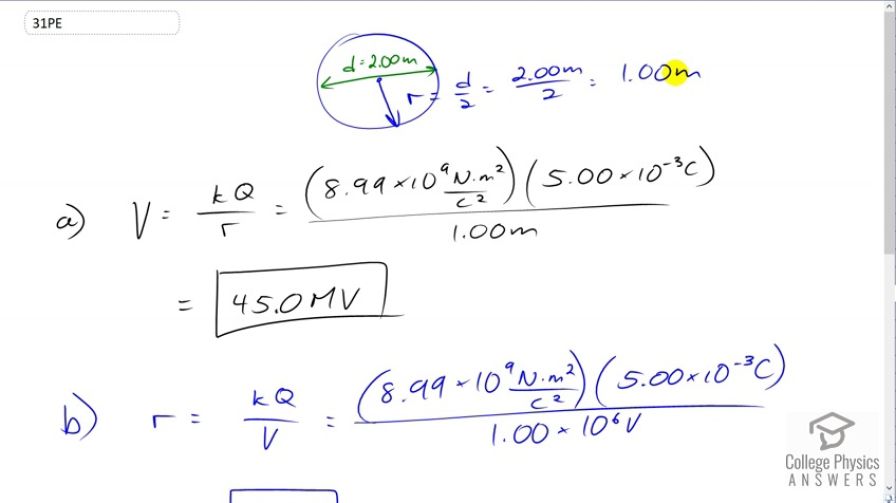Solution video
OpenStax College Physics, Chapter 19, Problem 31 (Problems & Exercises)

Calculator Screenshots
Comments
I understand that the question-maker will also suppose the metal sphere to be a point charge to solve this problem.
However, a metal sphere should only be assumed to be a point charge if the concerned distance is **sufficiently large**
if the concerned point-of-potential is near the surface of the metal sphere (charges are **on** the shere),
then without knowing the distance between the "point-of-concerned-potential" and the surface where the charges are ,
we cannot calculate the potential at that distance.
Hi qea, thank you for the insightful comment. It turns out that considering the metal sphere as a point charge is not an approximation, but rather it is exactly true so long as the distance to the point-of-potential is outside of the sphere. I think where you're coming from is when there are questions concerning a dipole, then that dipole can be approximated as a single point charge at large distances - and this approximation holds only for large distances. In this scenario of a charged conducting sphere, however, there is no approximation. The way I like to think of it is that, when close to the sphere, the charges on the near side of the sphere are responsible for a larger potential difference compared with a hypothetical point charge at the center, whereas the charges on the far side of the sphere are responsible for a smaller potential difference than the hypothetical point charge, and that these differences compensate for each other to give the same result as for a point charge at the center of the sphere. A more rigorous analysis would be to apply Gauss's Law. Hyperphysics has some pretty good articles about that which I encourage you to read. First read about the electric field due to a charged conducting sphere, and then the electric potential due to a charged conducting sphere.
All the best,
Shaun



